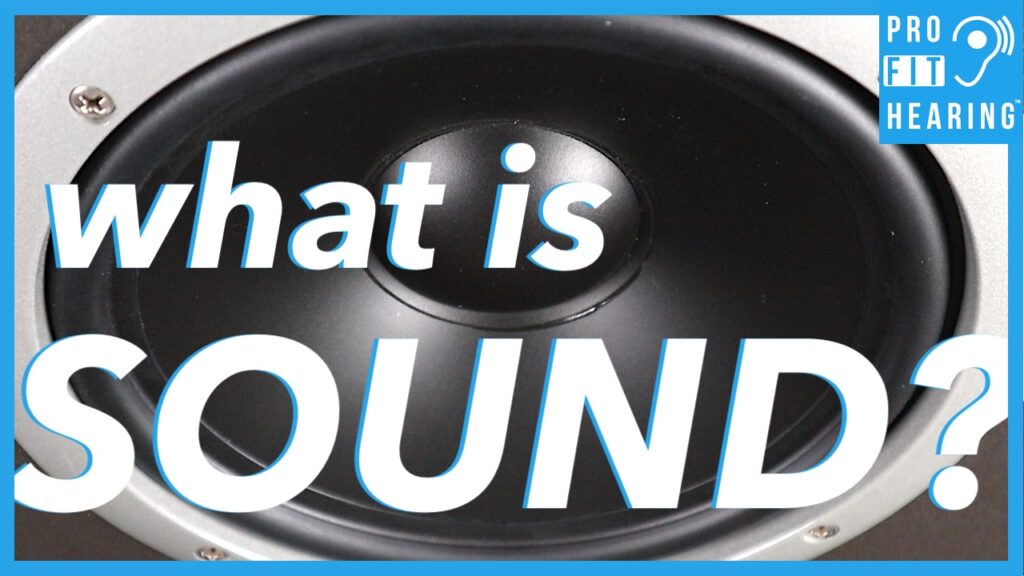What is Sound? – Understanding Sound Waves

What is Sound?
What is sound? Well, in this post I’ll discuss sound waves and how they work. Coming up!
SUBSCRIBE to our YouTube channel for weekly videos!
Hi, I’m Dr. Derek – audiologist, audio engineer, and musician with Pro Fit Hearing.com bringing you the best insight in today’s latest hearing aids, headphones, and audio technology to improve your life. If you have concerns about your hearing, always consult with your local physician or audiologist.
So, what is sound?
Sound is vibrating particles that can travel through air, water, or solids. The sound we hear travels to our ears at 343 meters per second or 767 mph! That’s faster than a passenger jet. It’s pretty incredible.
Sound waves travel through the air in the form of a longitudinal wave. This means the air vibrations travel parallel to the direction of the wave. This is what happens when you move a Slinky back and forth. There’s an initial compression of the coils followed by a rarefaction. The air particles are closest to each other during a compression and farthest apart during a rarefaction.
Let’s look at sound in its most basic form, the sine wave. This graphical representation of a sound wave is also called a transverse wave, meaning that the vibrations travel perpendicular to the direction of the wave. Some examples of transverse waves include a vibrating guitar string and even light waves.
What is Sound? – Terminology
On this graph we have a positive peak followed by a negative peak. This is one cycle.
The time it takes for the sound to complete one cycle is the period. The distance travelled over one cycle is the wavelength.
The number of cycles per second is called the frequency, and frequency is also referred to as pitch. The higher the frequency, the higher the pitch, and the more cycles per second. Frequency is measured in Hertz. For example the note A above middle C on a keyboard has a frequency of 440 Hz. The frequency decreases as you move down on the keyboard and increases as you move up on the keyboard.
The distance from zero to the peak of the waveform is called the amplitude or volume. It is measured in decibels. The amplitude indicates the volume or intensity of the sound. The positive peak of the waveform corresponds to the compression, and the negative peak corresponds to the rarefaction.
You can visualize the sound wave vibrations coming from a speaker by placing a paper with rice on top. As I turn up the volume, the vibrational intensity increases and makes the rice move.
What is Sound? – Hearing
Once sound reaches our ears, the vibrating air particles make our eardrums vibrate. This vibration continues to travel down into the middle ear and then to the inner ear. This stimulates the hair cells which send signals to the brain so that we can perceive sound.
Exposure to extremely loud sounds can damage your hearing. So, if you like music or work around loud sounds protect your ears against loud noise exposure. Noise induced hearing loss can be prevented with proper use of hearing protection like earplugs or earmuffs.
Question of the Day
So for today’s question, what one thing about sound did you learn today that surprised you the most? Let’s connect in the comments below!
Connect with Pro Fit Hearing on social media. Be a part of the Pro Fit Hearing community!
If you’re interested in hearing aids, click HERE for my free ebook “How to Buy Hearing Aids.” Know what to ask your audiologist or hearing aid dispenser so that your hearing aids are easy to use and have all the features you’re looking for.
Remember Pro Fit Hearing brings you the best insight today’s latest hearing aids, headphones, and audio technology to improve your life. If you have concerns about your hearing, always consult with your local physician or audiologist.
-Dr. Derek
